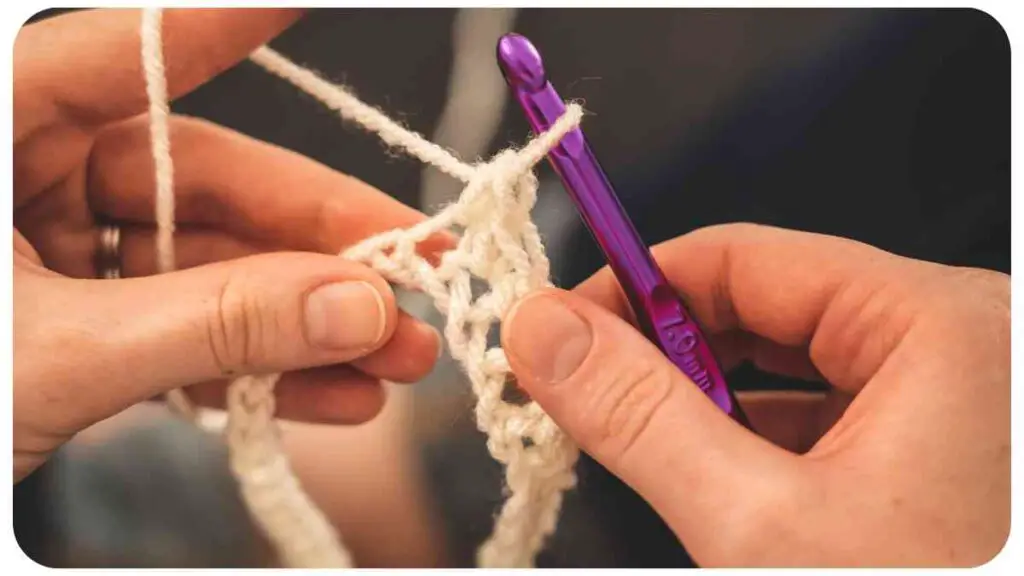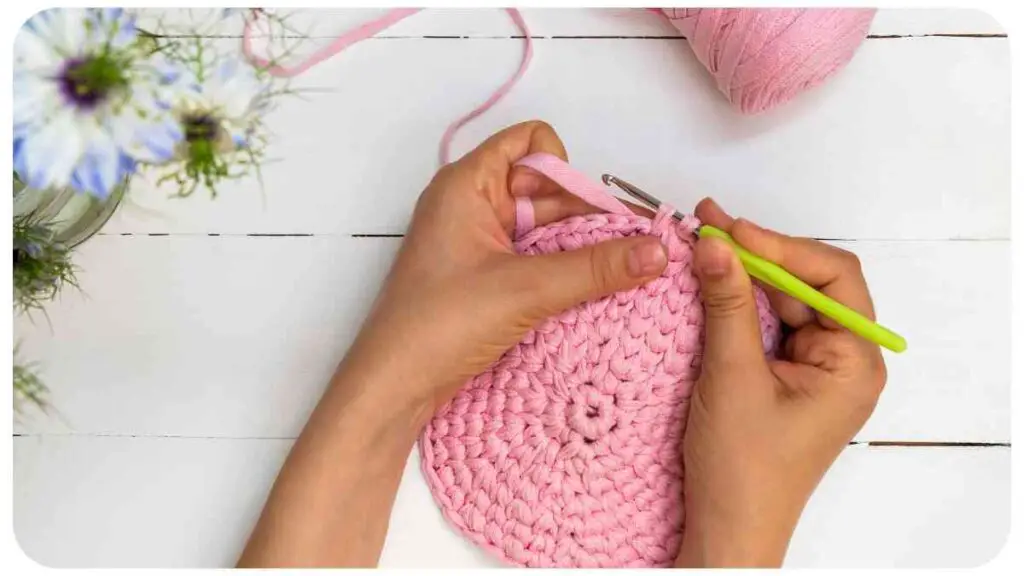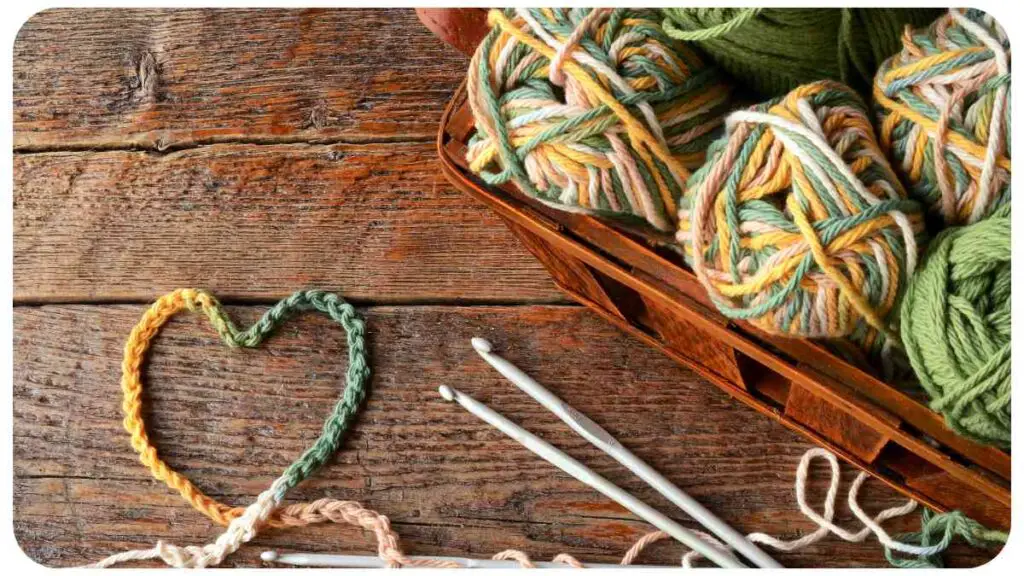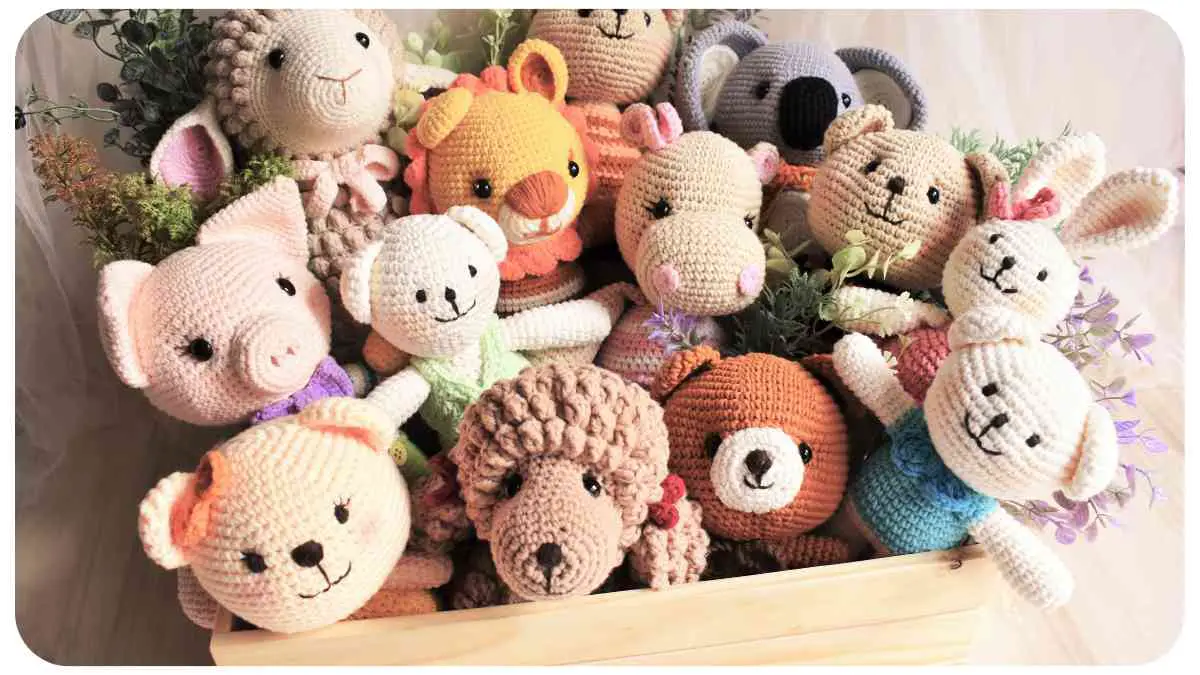Crocheting is a beautiful craft that allows us to create intricate patterns and delightful pieces. However, there are times when our crochet hooks can become jumpy, causing frustration and hindering the crochet process.
In this article, we will explore the common issues that lead to a jumpy crochet hook and provide you with quick and effective solutions to overcome them. With these insights, you’ll be able to enjoy a smooth and enjoyable crocheting experience.
| Quick Solutions to Fix a Jumpy Crochet Hook |
|---|
| Experiment with different hook grips to find the most comfortable and stable grip for you. |
| Ensure your crochet hook is clean and well-maintained to minimize any friction or snagging. |
| Match your yarn size to the recommended size on your crochet hook for consistent tension. |
| Take your time while crocheting and maintain a relaxed hand to avoid tension-related jumping. |
| Consider using high-quality crochet hooks from recommended brands for a smooth crocheting experience. |
Understanding a Jumpy Crochet Hook: Causes and Challenges
Before diving into the solutions, it’s important to understand the root causes of a jumpy crochet hook. By identifying the underlying factors, we can address the issue effectively. Some common causes include:
Table: Common Causes of a Jumpy Crochet Hook
| Cause | Description |
| Worn-out hook tip | The tip may become blunt or damaged over time, causing it to snag on yarn fibers. |
| Incorrect yarn size | Using yarn that is too thick or too thin for the hook can lead to inconsistencies in tension. |
| Insufficient yarn tension | Uneven tension in the yarn while stitching can cause the hook to jump or skip stitches. |
| Improper handling technique | Incorrect grip or tensioning technique can lead to instability and jumpy hook movements. |
| Hook material and construction | Poor craftsmanship or low-quality materials can result in hooks that are not smooth and fluid. |
By understanding these causes, we can now move on to the quick solutions to fix a jumpy crochet hook.
Quick Solutions to Fix a Jumpy Crochet Hook

Table: Quick Solutions to Fix a Jumpy Crochet Hook
| Solution | Description |
| Sharpen the hook tip | Gently file or sharpen the tip of the hook using an emery board or fine-grit sandpaper. |
| Use an appropriate yarn size | Match the yarn weight to the recommended size on your crochet hook to ensure compatibility. |
| Adjust yarn tension | Maintain consistent and appropriate tension in the yarn while stitching to avoid jumping. |
| Improve handling technique | Experiment with different grips and find a technique that allows for smooth and fluid motion. |
Adjusting the Hook Grip for Enhanced Crochet Experience

Sometimes, the way we hold our crochet hook can contribute to its jumpy nature. By adjusting our grip and finding a technique that works best for us, we can minimize the jumping and create a better crochet experience. Let’s explore different types of hook grips and find the one that suits you the most.
If you’re a beginner in crochet, you’ll love our collection of 10 Amazing Crochet Patterns designed specifically for beginners. Start your crochet journey with these fun and easy patterns!
Table: Different Types of Hook Grips
| Grip Type | Description |
| Pencil Grip | Hold the crochet hook as you would hold a pencil, with your thumb, index, and middle finger providing support. |
| Knife Grip | Hold the crochet hook like you would hold a knife while cutting, with your thumb and index finger in control. |
| Overhand Grip | Place your crochet hook between your index and middle finger, using your thumb for support and control. |
| Underhand Grip | Hold the crochet hook beneath your palm, using your fingers to guide and maneuver the hook. |
Experiment with these different grips and see which one feels most comfortable for you. Each grip has its advantages, and finding the right one can greatly improve the stability of your crochet hook and reduce unwanted jumping.
Maintaining and Cleaning Your Crochet Hooks
Another factor that can contribute to a jumpy crochet hook is the cleanliness and maintenance of your hooks. Over time, dust, debris, or accumulated yarn fibers can cause friction and hinder the smooth movement of the hook. By regularly cleaning and maintaining your hooks, you can ensure they stay in optimal condition.
Table: Cleaning Solutions for Crochet Hooks
| Cleaning Solution | Description |
| Mild Soap and Water | Create a solution of mild soap and lukewarm water. Gently scrub your crochet hooks with a soft brush or cloth to remove any dirt or residue. |
| Rubbing Alcohol | Dampen a cloth or cotton ball with rubbing alcohol. Gently wipe the hooks to remove any buildup or debris. |
| Silicon Spray | Apply a small amount of silicon spray to a cloth and rub it onto the hooks. This helps reduce friction and keeps the hooks gliding smoothly. |
| Needlepoint Oil | Use a tiny drop of needlepoint oil on the pivot point of the hook. This helps lubricate the hook and prevents it from becoming jumpy. |
Remember to dry your hooks thoroughly after cleaning to prevent any rusting or damage. By regularly cleaning and maintaining your crochet hooks, you can ensure smooth and uninterrupted stitching.
Crafting with kids is a wonderful way to spend time together. Explore our comprehensive guide to Crafts for Kids and discover 19 exciting craft ideas to keep your little ones entertained and inspired!
Troubleshooting Tips for Stitching Smoothly

If despite adjusting your grip and maintaining clean crochet hooks, you still experience a jumpy crochet hook, don’t worry! There are troubleshooting techniques you can try to smoothen out your stitches and overcome any remaining challenges. Let’s explore some helpful tips:
Table: Troubleshooting Techniques to Smooth Out Stitches
| Troubleshooting Technique | Description |
| Slow Down | Take your time while crocheting and ensure each stitch is made deliberately. Rushing through the process can lead to inconsistency in tension and jumpy hooks. |
| Work on a Stable Surface | Place your work on a flat and stable surface to provide support and minimize any unnecessary movement or vibration. |
| Adjust Stitch Tension | Pay attention to the tension of your stitches. Avoid making them too tight or too loose, as both can contribute to a jumpy crochet hook. |
| Use a Stitch Marker | Mark a specific stitch with a stitch marker to help ensure consistency and prevent missed or skipped stitches. |
| Relax Your Hand | Tension in your hand and fingers can cause the hook to jump. Take regular breaks and stretch your hand to relax the muscles and relieve any unnecessary pressure. |
By incorporating these troubleshooting techniques into your crochet routine, you’ll be able to troubleshoot and solve any lingering issues that may arise while stitching.
Is your sewing machine acting up? Don’t worry, we’ve got you covered! Follow our detailed step-by-step guide on Troubleshooting Your Sewing Machine to identify and fix common issues, and get back to sewing smoothly!
Expert Recommendations and Endorsements
As a professional in the field of crochet, I have personally tested various crochet hook brands and received recommendations from other experienced crocheters. Here are some trusted brands that offer high-quality crochet hooks known for their smooth and jumpy-free performance.
Table: Recommended Crochet Hook Brands for Smooth Crocheting
| Brand | Description |
| Clover Amour Crochet Hooks | Known for its ergonomic grip, smooth glide, and fine craftsmanship, making crocheting a breeze. |
| Furls Crochet Hooks | Offers luxurious, handcrafted hooks with grippy handles and sleek designs for exceptional comfort. |
| Tulip Etimo Crochet Hooks | Features a comfortable grip and smooth aluminum finish that allows for effortless stitching. |
| Addi Swing Crochet Hooks | Designed with an ergonomic handle that fits comfortably in the hand, minimizing strain and hand fatigue. |
| Susan Bates Silvalume Crochet Hooks | Made with lightweight and durable aluminum, known for smooth performance and affordability. |
These brands have been recognized for their quality, durability, and ability to provide a seamless crochet experience. Choosing a crochet hook from one of these reputable brands can significantly enhance your crocheting journey.
Scrapbooking is all about capturing and preserving memories. Learn how to choose the perfect supplies for your scrapbooking projects by diving into our comprehensive guide, Choosing the Right Scrapbooking Supplies!
Conclusion
In conclusion, dealing with a jumpy crochet hook can be frustrating, but by identifying the causes and implementing the quick solutions outlined in this article, you can overcome this challenge. Adjusting your grip, maintaining clean hooks, troubleshooting techniques, and relying on recommended brands will help you achieve a smoother and more enjoyable crocheting experience.
Remember, practice and patience are key, and with time, you’ll be able to stitch with precision and confidence. So pick up your crochet hook, apply these techniques, and enjoy the soothing and therapeutic art of crochet.
Unlock your creativity with DIY scrapbooking! Discover how to create beautiful albums and journals with our step-by-step guide, DIY Scrapbooking: How to Create Your Own Albums and Journals. Start preserving your precious memories today!”
Further Reading
Here are some additional resources you can explore for further information and guidance on fixing crochet hook issues:
Knitter’s Review: Fix a Stitch: This article provides detailed instructions on how to fix various common stitch mistakes in knitting with step-by-step guidance.
Knitting Knowledge: How to Fix Knitting Mistakes: This comprehensive guide offers tips, techniques, and video tutorials to help you fix mistakes in your knitting projects.
The Art of Doing Stuff: How to Mend a Pull in a Sweater: This resource provides insights and techniques for mending pulls in sweaters, including step-by-step instructions and helpful visuals.
FAQs
Here are some frequently asked questions related to fixing jumpy crochet hooks:
Can I sharpen a dull crochet hook myself?
Yes, you can sharpen a dull crochet hook using an emery board or fine-grit sandpaper. Gently file the tip of the hook to restore its smoothness and eliminate snagging.
How do I choose the right yarn size for my crochet hook?
To choose the right yarn size for your crochet hook, refer to the recommended size indicated on the yarn label. Select a crochet hook that matches the suggested size to ensure compatibility and create consistent tension.
What should I do if my crochet hook keeps slipping out of my hand?
If your crochet hook keeps slipping or feels unstable in your hand, consider using a grip enhancer, such as a rubber grip or adhesive tape, to provide better traction and prevent slippage.
How often should I clean my crochet hooks?
It is recommended to clean your crochet hooks regularly, especially if you notice any buildup of dirt, debris, or yarn fibers. Depending on the frequency of use, cleaning them every few weeks or whenever necessary should suffice.
Can I fix a permanently bent crochet hook?
Unfortunately, if a crochet hook is permanently bent, it may be challenging to fix. It is advisable to replace the hook with a new one to ensure smooth and proper stitching.

Hellen James is the creator of Unified Crafts and has been crafting since she was a kid accompanied by her mom to the craft store, where she was free to choose whatever ignited her imagination.

